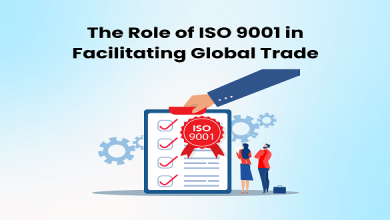Demystifying Telecommunications Support Programs: A Citizen’s Guide

Key Takeaways:
- An in-depth look at the vital telecommunications support programs available to citizens.
- Detailed exploration of eligibility criteria and the straightforward process for program application.
- Understanding the broader economic implications and social benefits of these support schemes.
- Insights into ongoing innovations and educational initiatives complementing these telecommunications programs.
What Are Telecommunications Support Programs?
Telecommunications support programs serve as a lifeline for individuals and families in financial distress or unable to afford essential communication services. These programs go beyond basic needs—they strive to empower and uplift, ensuring disadvantaged members maintain vital connections to the world around them. These services make access to emergency resources, potential employment opportunities, and meaningful societal engagement possible.
Eligibility for Telecommunications Support
To ensure that telecommunication support reaches those who can benefit from it most, eligibility criteria have been carefully devised. These benchmarks are often rooted in metrics that gauge economic need, such as a household’s income level relative to federal poverty guidelines. Additionally, the criteria may consider an individual’s participation in federal assistance programs—such as Supplemental Nutrition Assistance Program (SNAP), Federal Public Housing Assistance (FPHA), and Medicaid. Understanding these factors can significantly streamline the process for those seeking support, enabling quicker and more efficient access to these indispensable services. For insightful details on these vital programs and Lifeline qualifications, it’s essential to consult authoritative sources and meet the criteria they outline for eligibility.
The Application Process Simplified
The road to obtaining telecommunications support is paved with intentions of simplicity and accessibility. The initial step involves completing an application that can be found on the relevant support program’s website. Next comes the submission of documentation—this could be evidence of income level or proof of participation in a qualifying federal program. Once submitted, the application undergoes a review process where the provided details are verified. Finally, applicants are notified of their status, and upon approval, they are seamlessly connected to the support program’s benefits—ensuring equitable access to communication services for all.
Bridging the Connectivity Gap
The advent of the digital age has brought a slew of advancements. Still, it has also highlighted a stark digital divide—a split between those who can readily access telecommunication services and those who cannot. Telecommunications support programs aim to narrow this digital chasm through subsidization and assistance. They play a critical role in ensuring that communication tools, deemed everyday necessities, like a mobile phone or internet connection, are obtainable by communities that might otherwise be left in digital obscurity.
Knowing Your Rights and Resources
Citizens must first know their existence and purpose to effectively utilize telecommunications support programs. Understanding one’s rights regarding these services can profoundly impact one’s ability to make informed choices and take action. Resource centers, typically hosted by governmental agencies or non-profit organizations, provide extensive information on available assistance. Easy to understand and access, these portals are invaluable for anyone looking to better grasp telecommunication support programs and their rights within these systems.
Continuing Education on Technology Literacy
While having access to technology is imperative, knowing how to use it effectively is equally critical. Educational initiatives focusing on improving technology literacy ensure individuals are well-equipped to navigate the digital realm. These efforts complement telecommunication support programs by giving beneficiaries the skills and knowledge to use the services provided to their full potential. In doing so, they bridge another crucial gap—digital competency—and foster a tech-savvy citizenry ready to participate in a rapidly evolving digital landscape.
Economic Impact of Telecommunication Access
The repercussions of universal telecommunication access ripple out far beyond individual empowerment. There is a tangible economic impact when communities are digitally connected. Job seekers gain access to a myriad of employment opportunities online, students tap into vast educational resources, and citizens at large engage more fully in the economic life of their communities. The cascading effect of this connectivity stimulates local economies and galvanizes growth, making a compelling case for the widespread implementation of telecommunication support programs.
Innovations in Telecommunication Assistance
Technological advancement does not stop; thus, the evolution of telecommunication support mechanisms does not stop. Innovations within these programs are manifold—from automated online applications that streamline the sign-up process to digitally enhanced support services that provide users with real-time assistance. By continually introducing new technologies and refining existing ones, these programs ensure their beneficiaries are not left behind in an ever-progressing digital world.
Policies and Regulations Affecting Access
The telecommunications support policies and regulations are subject to frequent changes and updates. These modifications, often influenced by shifts in technology, economy, and political climate, can directly affect the nature and scope of support programs. As such, potential and current beneficiaries must stay informed about legislative changes that might influence their access to these vital services.
Community Outreach and Awareness Campaigns
Even the most robust telecommunications support programs can only be effective if the public knows them. That’s where community outreach and education campaigns come in. By spreading the word and demystifying the application process, these campaigns strive to ensure that everyone who qualifies for support hears about it and knows how to apply. These programs harness a variety of communication channels, from traditional town halls to social media blitzes, ensuring that no one in need of support is left in the dark.
Dive deeper into the intricacies of these vital programs and understand the impacts at a societal level through the extensive research and reporting found in the Pew Research Center’s study on the digital divide. Furthermore, staying current on policy and regulation changes is imperative for those utilizing or eligible for telecommunications support, a task made easier by monitoring updates from sources like the Federal Communications Commission’s Universal Service page.





